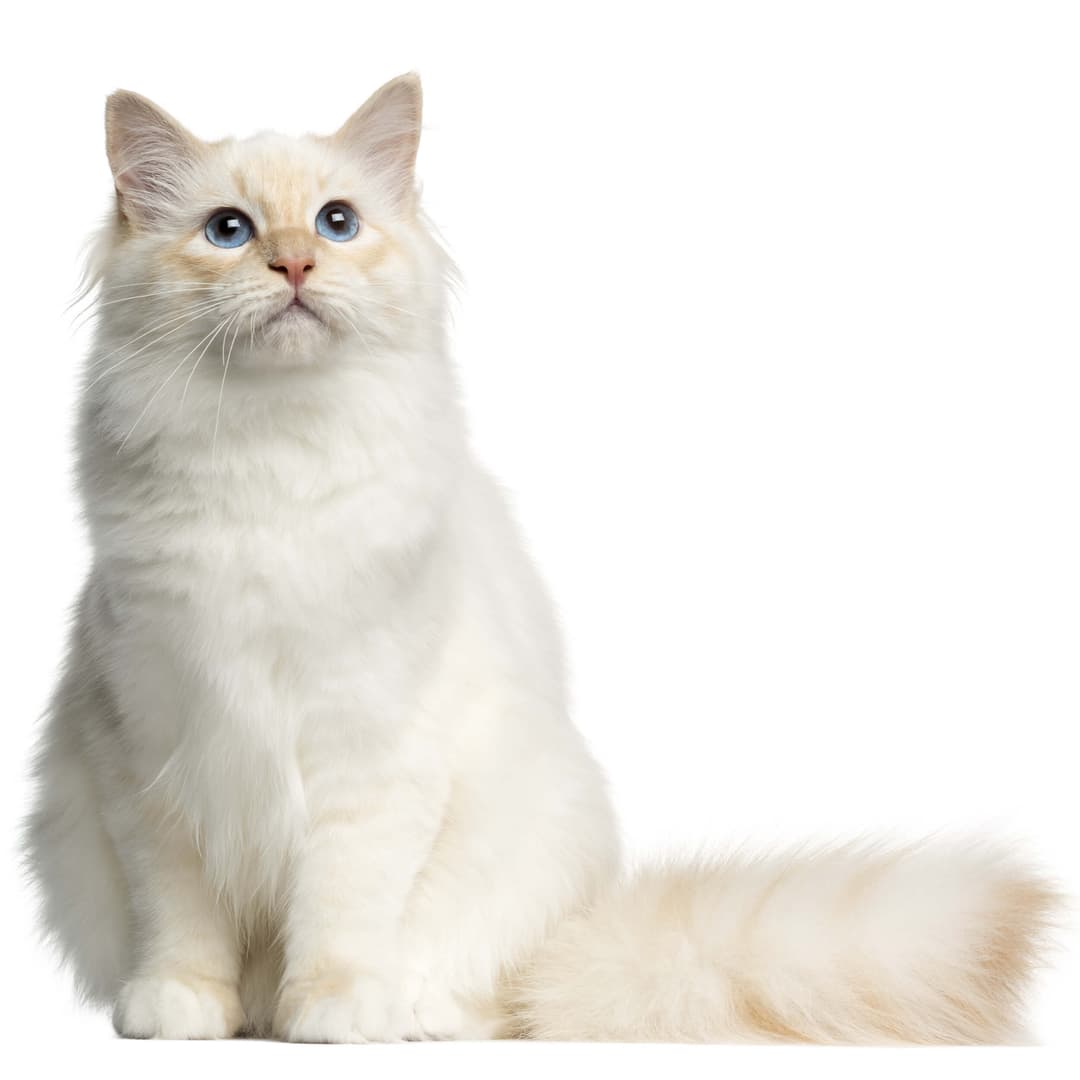Discover your cat's connection to this breed and 20 others


Discover your cat's connection to this breed and 20 others



Birmans are friendly, loyal cats of high intelligence who truly enjoy spending time with people. While they do have a curious and playful side, they are known as gentle, quiet cats who seek out cuddles and lap time with their favorite humans.
The Birman, also called the "Sacred Cat of Burma", is a strikingly beautiful longhaired cat. They are distinguished by their soft and silky coat, deep blue eyes, and contrasting white "gloves" on their paws, which are a trademark of the breed. Their coats are said to be easier to maintain than other longhaired breeds with brushing needed just a few times a week rather than daily. This is because they lack the dense undercoats characteristic of other longhaired cats that contribute to mats and tangles.
The exact history of this breed is unknown, though it may have originated in the country previously known as Burma, now called Myanmar, some 100 or more years ago. According to folklore, the remarkable beauty of the breed was said to be the work of divine intervention by a "blue-eyed goddess". The breed was nearly lost after World War II, with only two surviving cats. To restore the breed, these cats were outcrossed with longhaired Persians and Siamese. First brought to the United States in 1959, Birmans were recognized by the Cat Fanciers' Association (CFA) in 1967. The CFA states that most modern-day Birmans in the U.S. can be traced to England, France, Australia, and Germany.
The Birman is a docile, smart, and extremely sweet-natured cat. These gentle felines get along well with young children and other pets, making them excellent family companions. They are affectionate and always eager to be near their favorite humans. Unlike their close relative, the Siamese, Birman cats are generally quiet, though may on occasion greet you with a very soft meow. These kitties require love and attention to thrive and do not like to be left alone for very long.
The Birman is at an increased risk for early renal failure, congenital cataracts, feline infectious peritonitis, and hemophilia B. This breed is also at a higher risk for hypertrophic cardiomyopathy (HCM), the most common feline heart disease.
Their name derives from the French word Birmanie, which translates to Burma, or present-day Myanmar. Myanmar is a country in Southeast Asia, and is speculated to be a potential place of origin for the original breed.
First recognized by the Cat Club de France in 1925. It wasn't until 1966, however, that the breed was recognized in England by the Governing Council of the Cat Fancy, and by the Cat Fanciers' Association in 1967. It was accepted by the Canadian Cat Association and The International Cat Association in 1979.
They are one of the least genetically diverse cat breeds. A 2008 study by Lipinski et al. discovered that Birmans, along with the Havana Brown, Singapura, and Sokoke have very little genetic diversity among them. In contrast, Siberians were found to have the highest levels of heterozygosity values (i.e., inherited different versions/alleles of a genomic marker from each biological parent).
It may take up to two years for a Birman to develop its coat color. Birman kittens are born white, and they begin developing their pointed coloration within the first few weeks of kittenhood. Their final coat typically won't reach full development until two years of age.
Birmans are prone to obesity. These stocky and well-muscled cats love to eat. Pet parents should definitely encourage exercise and implement nutritionally-appropriate diets to help keep their Birmans healthy.
They are territorial and can be a bit jealous. Birmans are generally social cats, but they get very attached to their favorite humans. Birman kitties are known to be jealous if their human parent doesn't pay as much attention to them as they'd like. Though they can be territorial, Birmans are never aggressive.
The International Cat Association (TICA) “Introduction to the Birman”
Recommended by top vets with decades of experience
21 breeds
64 genetic health markers
50 genetic trait markers
